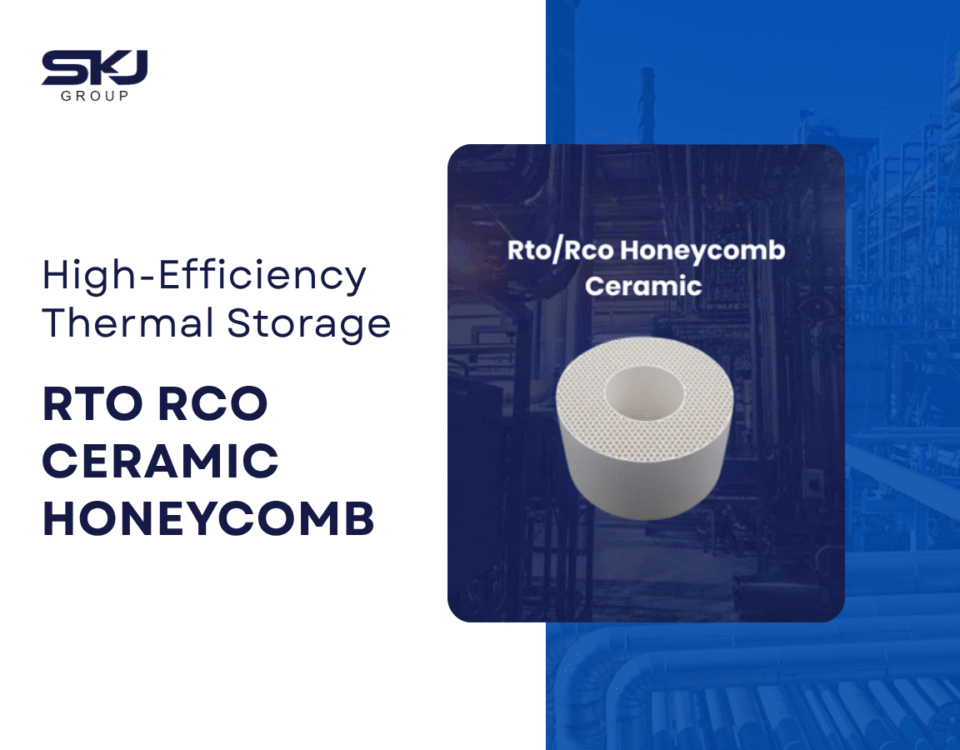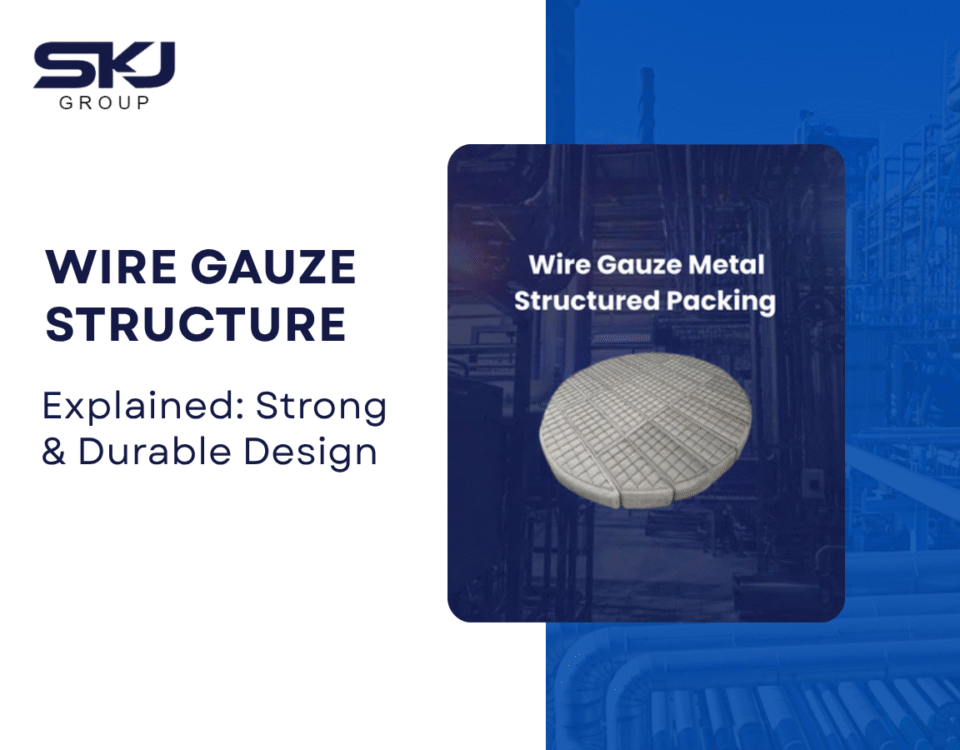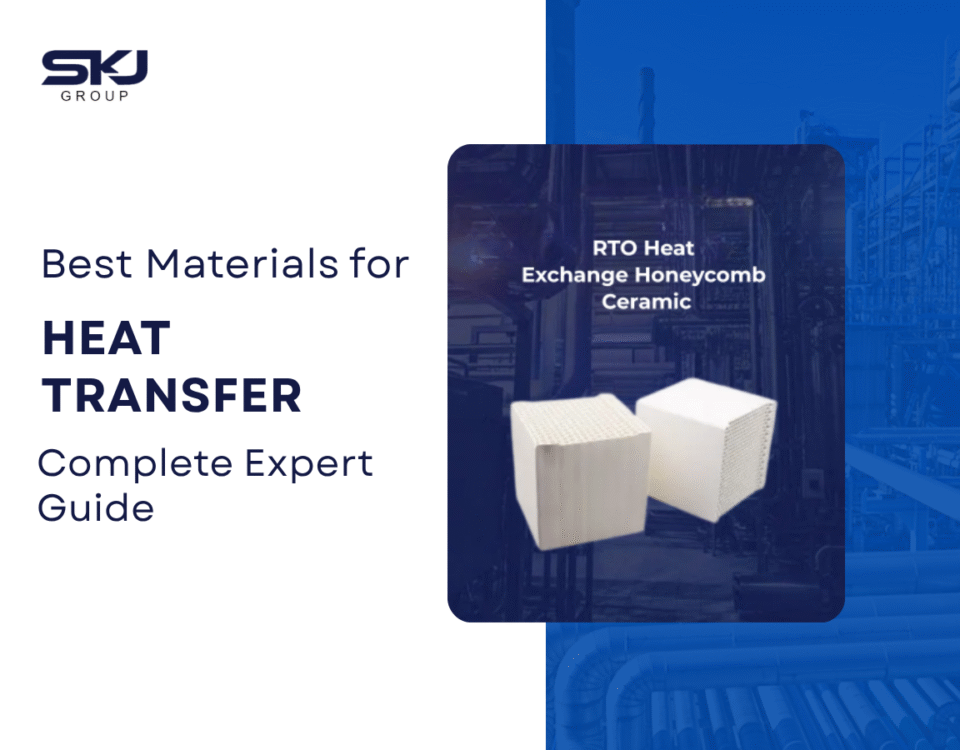How Do Ceramic Grid Blocks Improve Heat Distribution in Furnaces?

What Makes Ceramic Rings the Best Choice for Industrial Packing Towers?
July 14, 2025
Why Are Ceramic Honeycombs Essential for Air Pollution Control?
July 18, 2025Uneven heat distribution in industrial furnaces can lead to inconsistent product quality, higher energy bills, and premature wear of furnace linings. That’s where ceramic grid blocks step in. Designed for extreme thermal environments, these blocks optimize heat flow, reduce energy loss, and improve furnace efficiency.
If you’ve ever wondered how ceramic grid blocks improve heat distribution, this blog will explain their science, usage, and why partnering with a reliable ceramic grid block manufacturer or supplier is key to achieving long-term performance.
What Are Ceramic Grid Blocks?
Ceramic grid blocks are refractory structures made from high-alumina or cordierite-based ceramic materials. Their grid-like design allows them to:
- Withstand high temperatures (up to 1700°C)
- Resist chemical corrosion
- Enhance airflow and heat retention
They are commonly used in furnace hearths, kilns, burners, and regenerative thermal oxidizers (RTOs).
Why Heat Distribution Matters in Furnaces
Heat Uniformity Equals Product Quality
Whether you’re sintering ceramics, melting metals, or baking glass, the uniformity of heat inside the furnace determines:
- Product consistency
- Energy consumption
- Equipment lifespan
Uneven heating can cause warping, cracking, or under-processing of materials.
Energy Efficiency
Inefficient heat distribution leads to energy waste. Furnaces must overcompensate with higher temperatures or longer cycles, increasing fuel use and costs.
How Ceramic Grid Blocks Improve Heat Distribution
1. Even Heat Flow through Air Channel Design
Ceramic grid blocks feature a honeycomb or lattice structure that:
- Facilitates smooth, multidirectional heat flow
- Reduces hotspots and cold zones
- Ensures consistent temperatures across the furnace bed
2. Thermal Mass and Heat Retention
High-density ceramic grid blocks store thermal energy and release it slowly, which:
- Maintains consistent temperatures
- Reduces temperature fluctuations
- Speeds up furnace reheating during intermittent operations
This thermal inertia is especially valuable in continuous furnaces and RTOs.
3. Resistance to Thermal Shock
Due to their ceramic composition, grid blocks can:
- Withstand sudden temperature changes
- Avoid cracking or spalling
- Prolong furnace life during frequent heating and cooling cycles
This is particularly important in batch-type furnaces.
4. Compatibility with Different Furnace Types
Ceramic grid blocks can be customized for:
- Rotary kilns
- Tunnel furnaces
- Box-type heat treatment furnaces
- Glass annealing furnaces
- Thermal oxidizers
Ask your ceramic grid block supplier about custom configurations.
Industries That Benefit from Ceramic Grid Blocks
- Ceramic & Tile Manufacturing – For uniform firing of tiles and sanitaryware
- Steel & Foundry – To stabilize temperatures during casting and forging
- Glass Production – For preventing temperature variance in annealing
- Petrochemicals – In RTO systems for VOC removal
- Power Plants – To reduce NOx emissions in regenerative chambers
Advantages of Using Ceramic Grid Blocks
Increased Energy Efficiency
By reducing heat loss and improving retention.
Better Product Uniformity
Minimized variations across processed batches.
Low Maintenance
Ceramic blocks are durable and require minimal upkeep.
Sustainable Operation
Lower fuel consumption = reduced carbon footprint.
What to Look for in a Ceramic Grid Block Manufacturer
- Material Quality – High-alumina or cordierite ceramics
- Thermal Conductivity – Optimized for uniform heat flow
- Dimensional Accuracy – For easy integration in existing furnace setups
- Customization Options – Block size, pore size, and pattern variants
- Certifications – ISO, BIS, or equivalent industry standards
FAQ Section
Q1: Are ceramic grid blocks reusable?
A: Yes, they are reusable as long as they’re not cracked or corroded.
Q2: Can they be used in gas-fired furnaces?
A: Absolutely. They work well in both electric and gas-fired systems.
Q3: How long do they last in industrial furnaces?
A: Lifespan depends on usage, but they typically last 2–5 years in high-temp applications.
Q4: What shapes are available?
A: Blocks come in square, hexagonal, or circular grid patterns. Custom shapes are also available.
Conclusion
Ceramic grid blocks are the unsung heroes of modern furnaces. Their unique design enhances heat distribution, improves energy efficiency, and reduces operational costs. Industries across India are increasingly trusting ceramic grid block exporters to provide tailored, high-performance solutions for their heat treatment needs.
Upgrade your furnace performance now!
Reach out to our expert team to source durable, energy-efficient ceramic grid blocks from a trusted ceramic grid block supplier in India.




